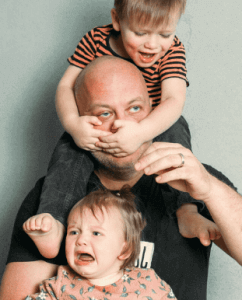A new study out of the University of Cambridge has found that singsong speech is vital for a baby’s ability to learn language skills. The study found that infants first understand language through rhythm and tone, rather than individual sounds or words.
Our brains’ ability to understand speech relies on a complex systems. There is a wealth of previous evidence which shows the how our brains’ foundational language centers are developed over the first few years of life. Small children initially learn small, fragmented sound-elements, and then, later learn how to combine them to make words and finally sentences. However, there is still so much we don’t know about how language development happens in babies.
Our previous understanding of how infant speech develops in the first year of life was largely dependent on observing infants’ responses and simple behaviors, such as turning their head to sounds. Researchers often had to try to read the babies’ body language and try to interpret what that meant.
However, as any parent knows also knows, communication with babies is not an exact science… and it’s not as if they can tell us.

The results showed that infants understanding of language first occurs through rhythm and tone, rather than individual sounds. As reported by The Guardian, “The scientists found that phonetic encoding in babies emerged gradually over the first year of life, beginning with dental sounds (produced by the upper front teeth) – such as “d” for “daddy” – and nasal sounds (produced when airflow is directed through the nose) – such as ‘m’ for ‘mummy’.”
This actually makes perfect sense. As any parent or early childhood worker knows, our kids love to make short disconnected sounds and play with the vibrational feeling in their mouths. Even though it’s nonsensical, our little ones seems to be sputtering their nonsense at a rhythmic pace. This Bebezinho na neve video is a fantastic and playful example of just that.
Say-it, don’t spray-it Baby!
Prof Usha Goswami, a neuroscientist at the University of Cambridge and the study’s author said, “Our research shows that the individual sounds of speech are not processed reliably until around seven months, even though most infants can recognize familiar words like ‘bottle’ by this point. From then individual speech sounds are still added in very slowly – too slowly to form the basis of language. We believe that speech rhythm information is the hidden glue underpinning the development of a well-functioning language system.”
Even if you can’t keep a beat, your brain can
“The brain absolutely has rhythm,” says Nathan Urban, a neuroscientist at Carnegie Mellon University in Pittsburgh in an interview with NPR. More than language, science has shown that the rhythms in the brain and nervous system also control many rhythms in the body, such as digestion and muscle impulses, which allow us to dance. Circadian rhythms are the physical, mental, and behavioral changes we all experiences over a 24-hour cycle.
Robert Pinsky, one of America’s foremost poet-critics, famously said, “The medium of poetry is not words, the medium of poetry is not lines-it is the motion of air inside the human body, coming out through the chest and the voice box and through the mouth to shape sounds that have meaning. It’s bodily.”
Since our brains literally synchronize their electrical activity with musical beats, especially electronic music, it should come as no surprise that language-development is part of the whole show too.
Sing Baby Sing!
As it turns out, before we can learn to speak or even read, we must first learn to groove. Goswami highly encourages parents and those who work with young children to be very vocal and sing to their little ones, “Parents should talk and sing to their babies as much as possible or use infant-directed speech like nursery rhymes because it will make a difference to language outcome.”

An avid book reader and proud library card holder, Angela is new to the world of e-Readers. She has a background in education, emergency response, fitness, loves to be in nature, traveling and exploring. With an honours science degree in anthropology, Angela also studied writing after graduation. She has contributed work to The London Free Press, The Gazette, The Londoner, Best Version Media, Lifeliner, and Citymedia.ca.

